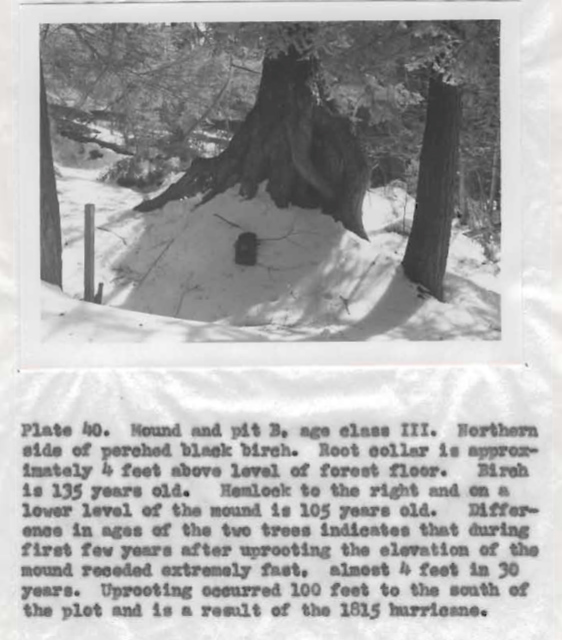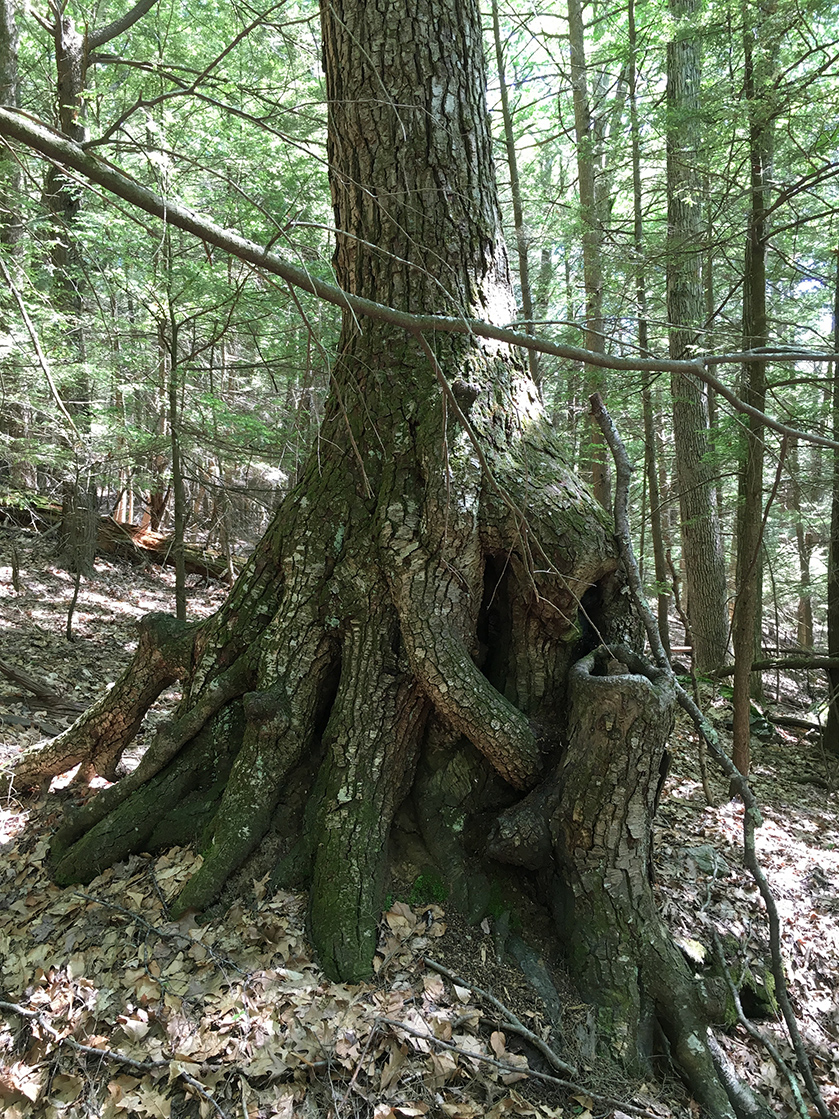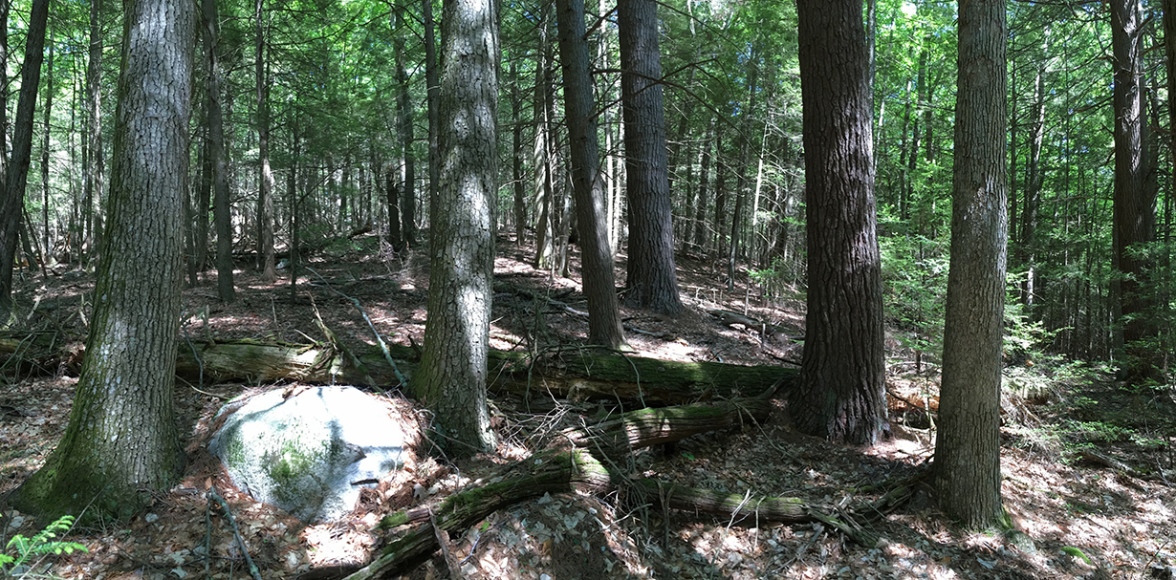Long before the Harvard Forest became an NSF Long Term Ecological Research site (LTER), it was a long-term ecological research station. Research, observations, and experiments on the dynamics and management of forests have been on-going since the early 1900s. Much of the data, including observations going back to the early 1900s, are packed away, in our physical storage and online, in the Harvard Forest Archive.
The value of observations made over the last 109 years are incalculable. How they might be used in the future is unpredictable. Personally, the value of long-term ecological research became very real today.

Plate 40 from Earl Stephens’ thesis
Pictured above is a picture from Earl Stephens’ thesis. Finished in 1955 and published in 1977, this 5-year study is simply phenomenal [as Dave Orwig has been telling me for quite some time now]. Really, amazing. Go flip through it. Think it would be funded today?
Anyhow, above is a black birch (Betula lenta; sweet birch for those south of the Mason-Dixon Line, roughly thereabouts). Stephens aged it and determined it sprouted on a tip-up mound from the 1815 hurricane.
Dave has been saying for months that we needed to go see it. After reading Oliver and Stephens (1977), we went out with our REU students to go find that tree. Dave hadn’t seen it in ~10 years.
After some tromping around – and seeing some cool trees, we found it:

The 1815 Hurricane Black Birch, May 31, 2016
Why did this drive home the value of long-term ecological research? I’m not sure I would have identified this black birch as:
- >100-150 years old
- having regenerated on a tip-up mound produced by the 1815 Hurricane.
It is obvious that it sprouted off of some kind of a nurse log or the like. And, it is obvious that there is some kind of a pit & mound topography associated with the microsite. But, putting the whole thing together without intensely coring that tree and “ecologically excavating” the site, I’m not sure the “story” for the tree, if true, would be possible.
What do we know about the long-term dynamics of our forests? How can remote sensing or the like help us re-create these dynamics?

The 1815 Hurricane Black Birch

Forest just south of the 1815 Hurricane Black Birch. From right to left: black birch, black birch, eastern white pine (Pinus strobus), and white oak (Quercus alba)
